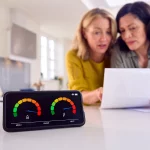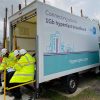Cross-Party MPs Launch Another UK Rural Broadband Inquiry
The Environment, Food and Rural Affairs Committee (EFRA) has launched a “short” inquiry that aims to examine the remaining problems with gaining access to superfast broadband ISP connectivity, mobile signals and accessing digital-only services in remote rural parts of the United Kingdom.
The terms of reference for the new cross-party inquiry read like a mirror for the many similar reports and studies that have been done over the past few years, including most recently by the Lords Select Committee on the Rural Economy (here), as well as the Rural Services Network (here) and Rural England CIC (here).
In fairness today’s situation has improved quite a bit since EFRA’s last report in 2015. Today fixed “superfast broadband” (24Mbps+) coverage reaches around 96% of UK premises (up from 83% in 2015 and potentially rising to 97-98% by the end of 2020), while outdoor geographic coverage of 4G based mobile services has risen to 66% of the UK (up from 43% last year) from all four mobile operators or 91% from one operator (EE).
Advertisement
Nevertheless all of the on-going work is still expected, once completed, to leave a coverage gap in some areas (c.2% for fixed superfast broadband and c.5-10% for 4G mobile in a few years time) and the majority of that will impact rural communities.
Unfortunately closing that gap will be disproportionately expensive and it’s too early to know how close the Government will actually get to 100% coverage of “full fibre” networks by 2033, but we suspect a fair gap will remain. On the flip side it’s likely that new services, such as those due to be delivered via Low Earth Orbit (LEO) satellites (example), could provide a much more effective solution than today’s GSO based satellite ISPs.
Neil Parish MP, Chair of the EFRA Committee, said:
“The EFRA Committee has decided to revisit this subject because – five years after our initial inquiry – digital connectivity still remains a core issue for many rural communities.
The Government has identified the challenges for improving digital connectivity in rural areas and recently made numerous policy and funding announcements.
We want to know if these plans for improving connectivity are adequate for rural areas and what is being done in the short term to improve delivery of broadband and improved mobile phone coverage to those living there.
The Committee will also test how the Government plans to ensure access to the growing number of online public services at no extra cost to rural consumers.
As previous select committee inquiries have shown, delivery of broadband in rural areas in the past has been poor. We cannot allow this problem to continue. The Government and service providers need to ensure that equal access to a high-quality, cost-effective service is accessible to all.”
The committee is now taking written evidence until 24th June 2019 and we’ll report back once the results are published, but if you’re already familiar with this issue then we wouldn’t expect too many surprises from their findings. By now this ground really should be quite well understood.
Inquiry Terms of Reference
Advertisement
- What are the barriers to delivering superfast broadband and improved mobile phone coverage in rural areas at an affordable cost to consumers?
- Is enough being done to address the disparity in coverage and digital service provision between rural and urban areas? What is the impact of the urban-rural digital divide on rural communities?
- Is the current Universal Service Obligation (USO) adequate for the needs of rural communities and businesses and will it be effectively delivered? Given technological developments, including provision of 5G, will the USO provide the necessary level of connectivity for rural areas in the next decade?
- Are the Government’s recent policy and funding announcements for improving digital connectivity adequate for rural areas, and how robust are the plans for delivery?
- How well do digital public services work in rural areas where there are poor internet connections? What support or alternatives are available for those in rural areas with poor or no connection to use digital public services and how effective is it?
Mark is a professional technology writer, IT consultant and computer engineer from Dorset (England), he also founded ISPreview in 1999 and enjoys analysing the latest telecoms and broadband developments. Find me on X (Twitter), Mastodon, Facebook, BlueSky, Threads.net and Linkedin.
« Alternative Full Fibre ISPs Aim to Cover 3.38 Million UK Premises by 2020


















































Comments are closed